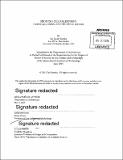| dc.contributor.advisor | Renée Green. | en_US |
| dc.contributor.author | Soroka, Ian Jacob | en_US |
| dc.contributor.other | Massachusetts Institute of Technology. Department of Architecture. | en_US |
| dc.date.accessioned | 2015-10-14T15:04:29Z | |
| dc.date.available | 2015-10-14T15:04:29Z | |
| dc.date.copyright | 2015 | en_US |
| dc.date.issued | 2015 | en_US |
| dc.identifier.uri | http://hdl.handle.net/1721.1/99303 | |
| dc.description | Thesis: S.M. in Art, Culture and Technology, Massachusetts Institute of Technology, Department of Architecture, 2015. | en_US |
| dc.description | Cataloged from PDF version of thesis. | en_US |
| dc.description | Includes bibliographical references (pages 108-113). | en_US |
| dc.description.abstract | The thesis will explore the migration of content between forms, specifically between cinema and text. By reflexively interrogating my film Dry Country, and drawing a thread through Yugoslav film history and Slovenian history (1941-present), I will map what happens when the record of what has been captured in the film's production confronts a language, be it text or montage. The paper is a partner piece to the film Dry Country, in the process of becoming at the-time of writing, which is concerned with a forest in Slovenia as a site of memory politics originating in the Second World War, and the echoes of that event today. The paper will dig deeper into the themes, questions, and specific historical context elaborated by the film; while in its structure it will stitch a poetic juxtaposition between the process of filmmaking and the mechanism of memory, in its capture, editing, projection, and transmission between people. By combining the theoretical trinity of the dynamic landscape (architectural), the evidential paradigm of the clue (micro-historical), and the materialist dialectic (philosophical), I have found a way to come the closest, through theory, to a means of articulating my thinking about making films in and about our relationship to landscape. The text will consider these themes in an essayistic manner, unfolding through alternating voices experiencing the recording of 'memory' and questioning the supposed site of history. The text proposes that it is located neither in the mind of the individual nor in a specific site or image, but in the gaps between, as a space of translation. I propose that mapping this territory can be done by crossing the rift from different reference points, between voice and image, between site and archive. I am designing the film and the text to be isolated works, standing on their own, though ultimately in conversation with one another. My goal is to reveal the space between the film and the text as a possible trajectory of future exploration for my artistic practice. | en_US |
| dc.description.statementofresponsibility | by Ian Jacob Soroka. | en_US |
| dc.format.extent | 113 pages | en_US |
| dc.language.iso | eng | en_US |
| dc.publisher | Massachusetts Institute of Technology | en_US |
| dc.rights | M.I.T. theses are protected by copyright. They may be viewed from this source for any purpose, but reproduction or distribution in any format is prohibited without written permission. See provided URL for inquiries about permission. | en_US |
| dc.rights.uri | http://dspace.mit.edu/handle/1721.1/7582 | en_US |
| dc.subject | Architecture. | en_US |
| dc.title | Eroding the palimpsest : landscape, cinema and the site of history | en_US |
| dc.type | Thesis | en_US |
| dc.description.degree | S.M. in Art, Culture and Technology | en_US |
| dc.contributor.department | Massachusetts Institute of Technology. Department of Architecture | |
| dc.identifier.oclc | 922929877 | en_US |
